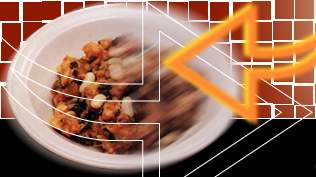

 |
 |
||||
When the Pig Was SlaughteredIn the country, when the time came to slaughter the pig, it was a time to celebrate. Mainly because you could eat something different than usual. The meats usually eaten in the country were chicken, rabbit, goose and other farmyard animals. Pork was only very rarely eaten and beef almost never. At my house, for years we butchered pigs of the "Siennese Wall" breed. Today it is recognized as the highest quality pork, with an excellent flavor despite its high fat proportion. I was so excited about the slaughtering that I didn't go to school that day despite my parent's disapproval. My uncle Pompeo was the pig butcher. His father, my Grandpa Vincenzo, had passed on the position to him. I later inherited the title and for a short time I prepared the pork and made prosciutto, capocolli and soprassate (types of salami), and sausage.Keep in mind that at that time freezers didn't exist and even refrigerators were fairly uncommon. So, some parts of the pig had to be eaten very quickly while most of it was conserved with salt or by other methods. The feast began the very day of the butchering. The blood was cooked with egg, parmesan cheese, raisins, and pine nuts. My uncle cooked it with an innard called the "collarino", the cord that ties the intestines together. I must say that though it was delicious, I could only manage to eat a little of it. All of the innards (the liver, the lungs, the heart, the tongue, the spleen) were cooked that night after the veterinarian checked them.Each part can be made into a delicious dish. I've suggested some recipes on this site.Finally, after a few days, the carcass was cut into pieces and the butcher would process it. He would separate the hams, the shoulders, the stomach and all of the other parts to be salted. Then he would make the sausages and salamis. Later I will tell you all of the details of the preparation techniques, but for now I want to focus on what was cooked that day. The pasta sauce was made only with pork so that it was richer than regular meat sauce. Let me tell you that using many different pieces of the fresh meat - a bit of ham, a piece of the flank and other parts I wouldn't know what to call - gave the sauce a truly wonderful flavor. Another delicacy we made the day we cut up the pig were the pork skewers. The country houses always had a fireplace where the skewers would be placed with a row of lean pieces of seasoned meat interspersed with pieces of sage and garlic. They were set on the grate and the meat was left to slowly cook for the entire morning. Finally at lunchtime, the skewers were taken out of the fire. The pieces of meat that had been squeezed close together on the skewers were golden brown on the outside. On the inside, they were the pink of tender and juicy cooked meat. (I forgot to mention the salt and pepper that are, of course, added). Finally, it's time to tell you how they tasted, but I'm afraid that words alone can't describe it. I can only tell you that it was very special. To get that taste, you need a fireplace, a skewer, a pig, and, most of all, a special day like the day we cut up the pig.
|